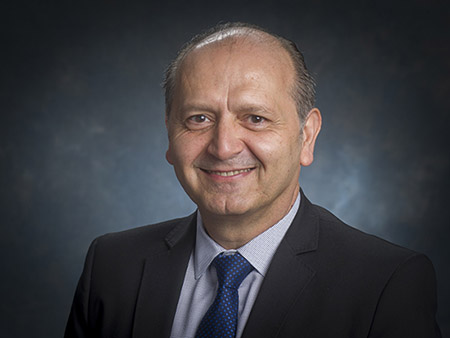Media contact: Adam Pope
 George J. Netto, M.D.George J. Netto, M.D., professor and the Robert and Ruth Anderson Endowed Chair of the Department of Pathology at the University of Alabama at Birmingham, will assume the role of editor in chief of Modern Pathology, the scientific journal of the United States and Canadian Academy of Pathology in 2020.
George J. Netto, M.D.George J. Netto, M.D., professor and the Robert and Ruth Anderson Endowed Chair of the Department of Pathology at the University of Alabama at Birmingham, will assume the role of editor in chief of Modern Pathology, the scientific journal of the United States and Canadian Academy of Pathology in 2020.
USCAP is a professional organization providing continuing medical education and translational research to improve practices and patient outcomes globally. USCAP employs modern educational delivery methods using digital assets to prepare pathologists for next-generation learning and make possible outreach to colleagues working in low-resource countries.
Netto will take over as editor in chief on Jan. 1, 2020, succeeding John Eble, M.D., of the Indiana University School of Medicine, who spent 20 years in the role and built Modern Pathology into one of the country’s top pathology publications.
“Under the strong leadership of Dr. Eble, Modern Pathology has made great strides to expand its scope as one of the most prominent and widely read journals in the field,” commented Netto. “As editor in chief, I will affect a clear vision and a dynamic leadership strategy for the journal to keep pace with the rapid evolution of our specialty.”
Netto brings to the position a strong plan to continue evolving the journal with a new editorial team, a restructured review process, and an enhanced social media footprint.
“While the revolutionary progress in human genomics will continue to offer a major source of content to Modern Pathology, a robust effort will be made to seek original manuscripts on the emerging areas of predictive biomarkers for immune therapy, the promising impact of machine learning and artificial intelligence on digital pathology, and applied bioinformatics,” Netto said.
Modern Pathology has an impact factor of 6.365 and ranks 5/76 in journals for pathology, placing it in the top five percent of the 12,500 journals with impact factors.